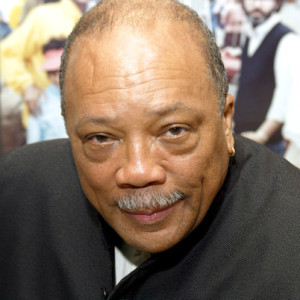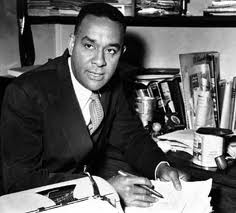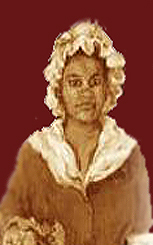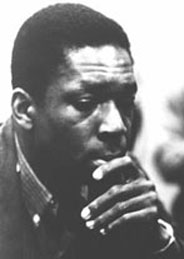Black History, Music, The Arts

Quincy Jones
Quincy Jones has had several very successful careers, largely leaving jazz altogether by the early ’70s to make his money out of producing pop, R&B and even rap records. His earlier years were much more significant to improvised music. He grew up in Seattle and his first important job was playing trumpet and arranging for Lionel Hampton’s Orchestra (1951-53), sitting in a trumpet section with Clifford Brown and Art Farmer.
During the 1950s he started freelancing as an arranger, writing memorable charts for sessions led by Oscar Pettiford, Brown, Farmer, Gigi Gryce, Count Basie, Tommy Dorsey, Cannonball Adderley and Dinah Washington among others. He toured with Dizzy Gillespie’s big band (1956), started recording as a leader for ABC-Paramount in 1956 and worked in Paris (1957-58) for the Barclay label as an arranger and producer. In 1959 Jones toured Europe with his all-star big band which was originally put together to play for Harold Arlen’s show Free and Easy. (more…)
Black History, The Arts

Richard Wright
(b. Sept. 4, 1908, near Natchez, Miss., U.S.–d. Nov. 28, 1960, Paris, France), novelist and short-story writer, who was among the first black American writers to protest white treatment of blacks, notably in his novel Native Son (1940) and his autobiography, Black Boy (1945). He inaugurated the tradition of protest explored by other black writers after World War II.
Wright’s grandparents had been slaves. His father left home when he was five, and the boy, who grew up in poverty, was often shifted from one relative to another. He worked at a number of jobs before joining the northward migration, first to Memphis, Tenn., and then to Chicago. (more…)
Black History, The Arts

Paul Lawrence Dunbar
Poet and author Paul Lawrence Dunbar was so talented and versatile that he succeeded in two worlds. He was so adept at writing verse in Black dialect that he became known as the “poet of his people,” while also cultivating a white audience that appreciated the brilliance and value of his work.
Majors and Minors (1895), Dunbar’s second collection of verse, financed by several white friends, was a remarkable work containing some of his best poems in both Black dialect and standard English. Melodic and rhythmical, his lines in this and other works often sing and swing along gloriously. (more…)
Black History, The Arts

Lucy Terry
Married name LUCY PRINCE, also called BIJAH’S (ABIJAH’S) LUCE, or LUCE (LUCY) ABIJAH (b. 1730, West Africa–d. 1821, Vermont, U.S.), American poet, storyteller, and activist of the colonial and postcolonial period. Her only surviving work, the poem “Bars Fight” (1746), is the earliest existing poem by an African-American; it was transmitted orally for more than 100 years, first appearing in print in 1855. Consisting of 28 lines in irregular iambic tetrameter, the poem commemorates white settlers who were killed in an encounter with Indians in 1746.
Born in Africa, Terry was taken by slave traders to Rhode Island at a very young age. She was baptized a Christian at age five, with the approval of her owner, Ebenezer Wells of Deerfield, Mass.; she became a full church member in 1744. (more…)
Black History, The Arts

Curtis Mayfield
Born in 1942, Curtis Mayfield was ahead of his time. Performer, producer, songwriter and businessman he was more in sync with the civil rights movement than any of the other musicians of his era. “My songs were not only personal to me, they were personal to a movement..” he said in 1989. He taught himself to play guitar and later performed gospel with his friend Jerry Butler in the Northern Jubilee Singers.
In 1957 they formed the Roosters, a doo wop group. The name would change again, to the Impressions, before they scored a hit with “For Your Precious Love”. Jerry Butler, the vocalist for the song, left the group to go solo…taking Curtis along as guitarist, though he still remained with the Impressions. In 1960 Mayfield made his first hit as a songwriter and soon other singers in Chicago were turning to him to write for them. (more…)
Black History, The Arts

John Coltrane
Born in 1926, John William Coltrane moved to Philadelphia after graduating from high school. He mastered the alto, tenor and sprano sax and began playing in local venues. In 1945 he joined the US Navy band. A few years later, he joined Dizzy Gillespie’s big band where he stayed until 1951.
He underwent a “spiritual awakening” of sorts in 1957 and as a result he kicked his drug and alcohol habits. Coltrane was a jazz explorer, he was perhaps one of the greatest innovators of modern music. Interested in free jazz and Indian scales, he was always forging new paths into unknown territory.





